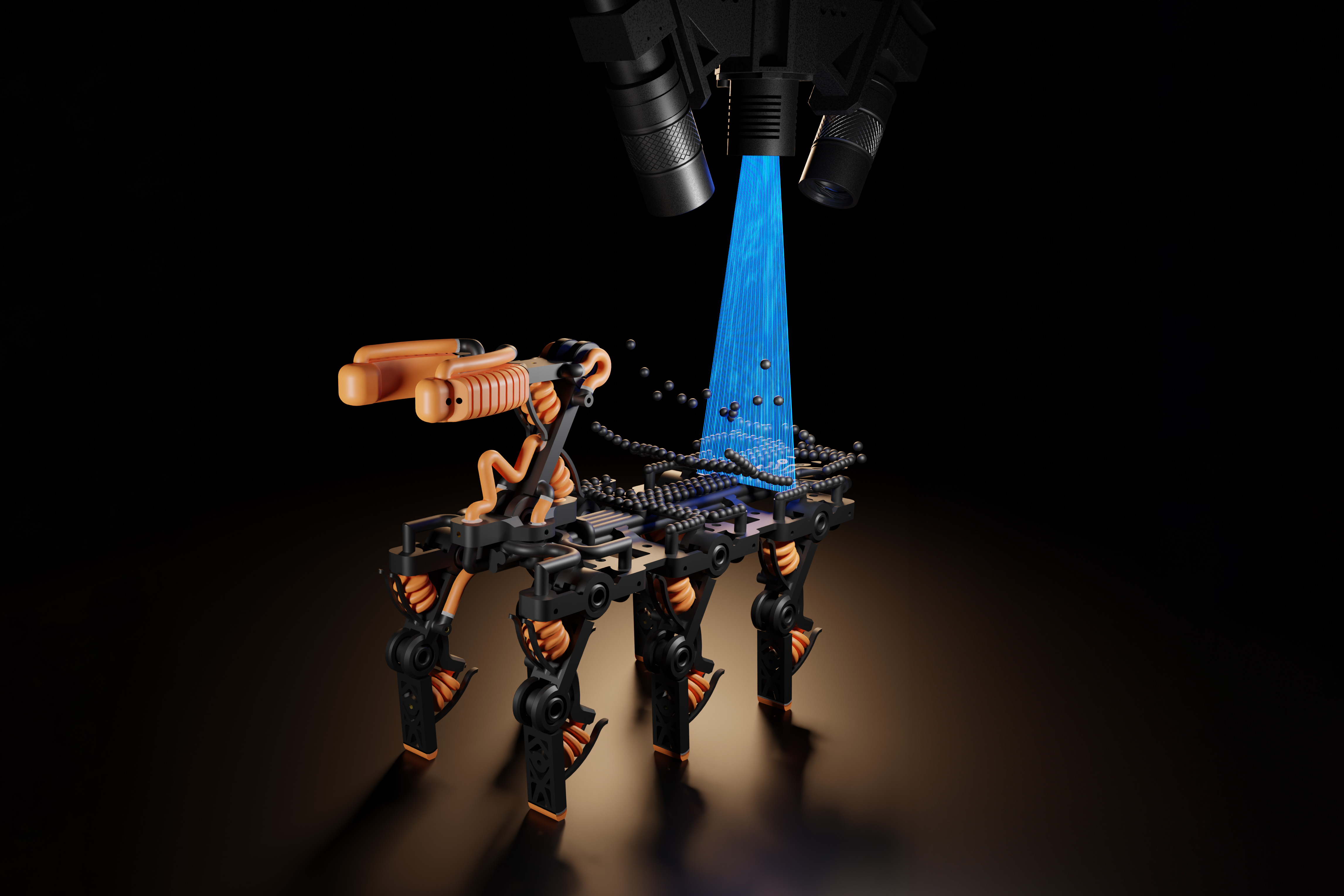Researchers from MIT, the MIT spinout Inkbit, and ETH Zurich have developed a new 3D inkjet printing system that uses computer vision to adjust the amount of resin each nozzle deposits in real-time. This contactless system allows for the use of materials that cure more slowly than traditional acrylates, enabling the fabrication of complex devices that combine soft and rigid materials. The system is also much faster than comparable 3D inkjet printers.

Revolutionary 3D Inkjet Printing System Enhances Material Range and Speed
A team of researchers from MIT, Inkbit, and ETH Zurich have developed a groundbreaking 3D inkjet printing system that can work with a wider range of materials and significantly increase printing speed.
The new printer utilizes computer vision technology to scan the 3D printing surface and adjust the amount of resin deposited by each nozzle. This ensures that each area receives the correct amount of material, expanding the range of materials that can be used with the printer.
Unlike traditional 3D printing systems, this contactless printer doesn’t require mechanical parts to smooth the resin, making it compatible with materials that cure more slowly. These slower-curing materials can offer improved performance, such as increased elasticity, durability, and longevity.
Moreover, the printer’s automatic adjustments are made in real-time without stopping or slowing down the printing process, making it approximately 660 times faster than comparable inkjet printers.
The researchers have used this printer to create complex robotic devices that combine soft and rigid materials. For example, they have successfully printed a robotic gripper shaped like a human hand, which is controlled by a set of reinforced yet flexible tendons.
This system offers precise control over the printing process, allowing for the use of wax as a support material to create cavities and intricate networks of channels inside printed objects. The wax is melted and drained out after printing, leaving open channels throughout the final object.
The printer’s compatibility with slower-curing materials, such as thiol-based resins, opens up possibilities for fabricating robots and systems that interact with the real world. These materials offer enhanced elasticity, stability across temperatures, and resistance to degradation.
The researchers envision a wide range of applications for this technology. They are exploring the use of hydrogels for tissue engineering, as well as silicon materials, epoxies, and durable polymers. They also plan to print customizable medical devices, semiconductor polishing pads, and more complex robots.
This research is funded by Credit Suisse, the Swiss National Science Foundation, the U.S. Defense Advanced Research Projects Agency, and the U.S. National Science Foundation.
Unlock the Power of AI for Your Business
If you want to leverage AI to stay competitive and evolve your company, consider the practical solutions offered by AI. Here’s how you can get started:
- Identify Automation Opportunities: Locate key customer interaction points that can benefit from AI.
- Define KPIs: Ensure your AI endeavors have measurable impacts on business outcomes.
- Select an AI Solution: Choose tools that align with your needs and provide customization.
- Implement Gradually: Start with a pilot, gather data, and expand AI usage judiciously.
For AI KPI management advice, connect with us at hello@itinai.com. For continuous insights into leveraging AI, stay tuned on our Telegram channel or follow us on Twitter.
Practical AI Solution: AI Sales Bot
Consider the AI Sales Bot from itinai.com/aisalesbot. It is designed to automate customer engagement 24/7 and manage interactions across all stages of the customer journey.
Discover how AI can redefine your sales processes and customer engagement. Explore solutions at itinai.com.
List of Useful Links:
- AI Lab in Telegram @aiscrumbot – free consultation
- This 3D printer can watch itself fabricate objects
- MIT News – Artificial intelligence
- Twitter – @itinaicom


























